- Home
- James A. Michener
Space: A Novel Page 3
Space: A Novel Read online
Page 3
He was Nishimura Teiji, a man without fear. He had fought his ships bravely in many battles and expected to continue doing so, whatever Sho-Go directed him to do. With consummate skill he sneaked his battle line up from Borneo, around the southern Philippine Islands and into the narrow strait that would lead him to MacArthur’s beachhead. As dusk fell he prayed to his Shinto gods of war that no American fleet would be waiting for him at the exit, but as a sensible man he realized that this was a forlorn hope.
The two feints, one to the north, the other to the south, and each extremely dangerous, had been set in motion in order to spring free the redoubtable Central Fleet, which would leave from Singapore, steam north at flank speed, cut boldly east, and come crashing through the formidable San Bernardino Strait, which the American command had long ago decided was too perilous for any warships to negotiate. The job of bringing a major fleet—five massive battleships, twelve heavy cruisers, fifteen destroyers, all with enormous firepower—through waters deemed impossible to navigate was given to the boldest admiral of the three, Kurita Takeo, a man of medium height and modest weight, with a close-cropped bulldog head. On the eve of battle he told his commanders, ‘I expect every one of our ships to steam through San Bernardino Strait without incident, and then to fall upon the enemy and drive him from the Philippines,’ He led the way, moving at a speed that would have been incomprehensible, in these narrow waters, for a small fishing boat. Thirty-one major warships followed in line. If they broke through and if the American Halsey was lured north with his major fleet, and if Admiral Nishimura used his South Fleet to divert the other warships in the area, Admiral Kurita’s powerful force would find only a phantom American fleet to confront it: a few baby aircraft carriers, a few small destroyers. These could easily be sunk, and then General MacArthur would be driven from his beachhead and perhaps even carried as prisoner to Tokyo.
Dusk on 24 October was a time of silent apprehension, for one of the greatest naval battles in world history was about to erupt: three separate Japanese fleets against three separate American fleets. A capricious fate had determined that no one of the Japanese fleets would meet an American force of comparable size and power. The individual battles were going to be terribly unfair, and not always in favor of the Americans. By dawn on 25 October, General MacArthur’s fingerhold on the Philippines could well be in mortal peril.
It fell to Admiral Nishimura, leading the South Fleet, to feel the first taste of battle. Curiously, the Americans, despite their superiority in air power and their prudent use of scouting planes, did not detect the movements of either the Central Fleet or the South, and these massive forces were left free to move into their straits as they wished, but two American submarines, always on the prowl, by the sheerest luck were loitering along the very path that Admiral Nishimura was following, and with skill and courage they pumped torpedoes into one of his big ships. Before the battle was engaged, he had suffered a dreadful loss, but a much worse problem lurked at the exit from the strait.
Since the beginning of naval warfare, admirals had known that there was one condition to be avoided, and every ensign learning the rules of war had memorized the truism: ‘Never let the enemy cross your T.’ The same young men, when they had mastered this lesson, dreamed of the day when by clever maneuvering they could cross the enemy’s T, for then victory was assured. Don Juan of Austria, half brother of Philip II of Spain, had crossed the Turkish T at the battle of Lepanto in 1571 and altered the history of the Mediterranean. Lord Nelson had crossed the French T and saved England. At Jutland in World War I the British crossed the German T to save Europe.
Of course, in 1944, with battleships having airplanes to scout for them, it was preposterous for naval men to still dream of crossing the enemy’s T, but some did, and among them was Admiral Jesse Oldendorf, commander of the American battleships prowling the other end of Admiral Nishimura’s strait on the slight chance that the Japanese might be attempting to force it.
As the bombers heading for Peenemünde on this night had discovered, there was a half-Moon casting considerable light, but at dusk it stood right at the apex, and before midnight it would disappear, leaving the sky dark. Admiral Nishimura, heading straight for the waiting Admiral Oldendorf, counted on this darkness to obscure the Japanese warships, and it did, so on he plowed at a speed which terrified some of his subalterns.
The crossing of a T consisted of this. The enemy fleet must be in file, one behind the other and in such position that its ships cannot easily or quickly move up one beside the other. They form the stem of the T, and for reasons which will be explained, are cruelly vulnerable. The attacking fleet must be in line, which means that every gun on a given side of the ships can bring to bear upon the lone enemy ship at the head of the file, whereas this exposed target can bring its guns to bear on only one of its tormentors. And as soon as the first enemy ship is sunk, which it will surely be when facing such concentrated firepower, the next ship in file moves into the lead, where it finds fifteen or twenty enemies waiting.
In the hours before sunrise, when the sea was dark and the Japanese ships were in file, one behind the other, Admiral Oldendorf crossed their T.
Not often in naval history had there been a major battle in which the forces were so ill-matched. Admiral Nishimura would exit the strait with only seven ships: two major battlewagons, a cruiser and four destroyers. He would be faced by overwhelming American strength: six major battleships with terrifying names like Maryland, West Virginia and Tennessee, four heavy cruisers, each more powerful than some battleships, four light cruisers and an amazing twenty-eight destroyers. This meant that the Japanese were outnumbered 42 to 7. In addition, the Americans had forty-five small and lively PT boats to sting and harass the enemy, forcing him to break up his orderly approach.
The battle was joined in pitch-darkness, beginning at three o’clock in the morning, a condition which Nishimura preferred because he knew that in previous night battles the Japanese had usually bested the Americans, who did not seem to know how to conduct themselves in darkness.
This time they did. As Nishimura led his small fleet toward open water, American destroyers, bewildering in their abundance, slashed at him, throwing his ships once more into confusion, slowing some down and crippling others.
Then, from a distance of eleven miles, without seeing the Japanese fleet and guided only by radar, the mighty guns of the American battleships opened up, and whenever they paused, the eight cruisers took over, including the Australian Shropshire. Among them, the six battleships carried more than three thousand heavy shells, which they threw with deadly accuracy until the night sky was illuminated with gunfire and towering explosions from the doomed Japanese fleet.
Nishimura Teiji died with his ships. From the moment Sho-Go was explained, he had known that when he exited from the strait, something would be waiting for him, but even in his most pessimistic moments he had not dreamed that his T would be crossed by six major battleships and eight monstrous cruisers. He lost six of his seven ships; the Americans lost none. It was a loss without parallel in recent naval history, but it was also a suicide venture which amounted to victory, since Nishimura had accomplished precisely what had been required of him. He had kept the big American warships bottled up at the south, leaving General MacArthur’s troops on Leyte exposed to the Japanese Central Fleet when it broke through. A survivor from Nishimura’s flagship reported that the little admiral had stood calmly on the bridge of his ship as it sank, obviously content that he had done his job.
The North Fleet had also gained a victory, in a manner of speaking, for Admiral Ozawa Jisaburo had tricked Admiral Halsey into running far to the north to take the bait which the Japanese had dangled before him, leaving the Leyte landings unprotected.
It was a tempting lure that Ozawa offered: a major Japanese fleet consisting of eighteen warships, including four of Japan’s greatest aircraft carriers. Had Halsey refused this challenge, even though responding to it did imperil MacArthur’s lan
ding, he would have been a naval idiot. So after the most delicate weighing of alternatives, and fully aware of what he was doing, Bull Halsey roared north, taking with him an American fleet of staggering size: six great battleships like the Iowa, the New Jersey and the South Dakota; ten aircraft carriers like the Essex, the Enterprise and the Lexington; eight cruisers; and forty-one destroyers. Once more the Japanese were outnumbered, 65 to 18, but this had been intended.
What was not intentional was the lamentable fact that the four great Japanese carriers, deadly terrors in the early days of the war, were now without planes. This vast fleet could put into the air only fifteen airplanes, and since they were manned by untrained pilots, even these would soon be shot down; whereas the ten American carriers had a plethora of planes with superbly trained pilots to fly them. So in the second battle here at the north, like the first at the south, the imbalance between the two fleets was staggering, and Admiral Ozawa knew as day broke on 25 October that he, too, was engaged in a suicide mission. His task was simple: keep Halsey engaged, while sacrificing as few ships as possible.
Then came the slaughter. Halsey, convinced that the outcome of the Pacific war depended upon his knocking out the Japanese carriers, fell on them remorselessly. The battle had scarcely begun when the swift carrier Chitose absorbed a hellish concentration of bombs, sinking at 0937. At 1018 the battle-hardened Chiyoda lay dead in the water and had to be abandoned; she would sink at 1630. At 1414 the monstrous Zuikaku, one of the most powerful carriers in the world, rolled over and sank. At 1526 the mighty Zuhio was attacked by twenty-seven American planes and sank under the weight of their bombs.
The guts of the North Fleet had been eviscerated, and Halsey’s big warships were free to move close and finish off the remaining fourteen Japanese ships. It was apparent that only a naval miracle could save the Japanese fleet, and now just such a miracle occurred.
Admiral Halsey, gloating in his flag command quarters, began receiving anguished messages from Leyte Gulf, where a disaster of such enormous dimension had overtaken the American forces that General MacArthur’s position was in mortal danger. Halsey was confronted by a cruel choice: stay north, finish off Ozawa’s fleet, and terminate Japan’s naval threat; or speed south to help avert disaster. His whole inclination was to stay north and destroy Japan’s capabilities, and this would have been the correct decision. Left to himself, he would surely have chosen that alternative.
But now one of the sardonic mischances of warfare intervened to trick him into the wrong decision: he received a garbled interrogation from Honolulu. When sending important coded messages it was the custom in the United States Navy to preface crucial details with nonsense words and to close with others. This yielded a twofold advantage: it required the enemy to waste time trying to decipher the entire jumble, and when the operation was ended and its details known, it prevented him from making clever guesses as to which coded word had meant which salient fact. A well-constructed Navy message might read CHICAGO WHITE SOX FOUR CLEVELAND INDIANS TWO LANDING ON BOUGAINVILLE AT 0730 ZEBRA GET THEE TO A NUNNERY.
Admiral Nimitz, in Honolulu, watching the course of this great battle—to be termed later by historians as ‘the greatest sea battle in the long history of naval warfare’—realized that Halsey’s flight to the north had imperiled the operation, leaving MacArthur in jeopardy, and when he saw the danger imposed by Japan’s Central Fleet, he rushed Halsey an urgent message: WHERE IS TASK FORCE 34?—referring to the portion of Halsey’s fleet that was supposed to be guarding the center. The sending signalman properly opened the message with nonsense words: TURKEY TROTS TO WATER, which was traditionally digressive, but unfortunately he ended with a flourish acquired in some English class, and this could be read as part of the message: THE WHOLE WORLD WONDERS.
The unfortunate addition would still have been harmless if the receiving signalman had done what he was supposed to do, knock off the irrelevant beginning and ending phrases, but he was confused by the close relationship of the last two phrases and handed Admiral Halsey this message from headquarters: WHERE IS TASK FORCE 34? THE WHOLE WORLD WONDERS.
Halsey could interpret this only as a rebuke and possibly as a veiled attack upon his honor; because of his headstrong behavior, he had left a detachment of the American fleet in mortal danger.
In disgust and dismay, he turned away from the crippled Japanese North Fleet, which could now escape to safety, and sent his battleships south on what he knew would have to be a futile mission. If conditions in Leyte Gulf were as perilous as the messages reported, his battleships would arrive far too late to be of any good. At this sad point in the great battle he realized that he had been tricked; Admiral Ozawa, that canny master of naval deception, had dangled before him four aircraft carriers that were largely useless, with no planes, pilots or aviation gasoline. Even if Halsey had not attacked them, they would have died of their own strangulation.
So the Japanese won the first two engagements in this running battle, even though the cost had been suicidal. Nishimura had tied down the American battleships in the south, Ozawa those in the north. Now everything depended upon Admiral Kurita Takeo of the Central Fleet, and rarely in history did any admiral enjoy such an un-trammeled opportunity to crush a major adversary.
Admiral Kurita launched his triumph in high style. After fighting off numerous American aviation attacks without losing one ship, he personally led his huge, powerful fleet in one of the notable maneuvers in naval history, bringing it safely through the narrow strait which the Americans had deemed impassable, considering it far too narrow and dangerous to permit the passage of a destroyer, let alone a battleship.
But Kurita was lucky, bringing with him a most formidable string of warships: five of the most powerful battleships, whose guns were of greater caliber than the Americans’, eleven massive cruisers and fifteen destroyers. This fleet of thirty-one sturdy, well-manned ships could confront any adversary.
It was amazing what they did confront. With Halsey taking his six battleships north, and Oldendorf taking his six south, none was left for the middle. Nor were there any cruisers. Nor any large aircraft carriers. Nor any of the really big new destroyers.
What was there? A ragtail collection of small, thinshelled, lightly armed, slow-moving baby aircraft carriers, called ‘Jeeps’ or ‘baby flattops,’ intended for unopposed antisubmarine patrol or the support of Army troops ashore. There were sixteen of these, each with one futile five-inch gun and a limited supply of all-purpose ammunition, which meant that it suited no specific purpose at all. To protect the defenseless baby flattops, there were nine moderate-sized destroyers and twelve sharply undersized craft called destroyer escorts, whose name correctly defined their duties. They were not intended for major battle.
In the DE Lucas Dean, built in a hurry in Bremerton nine months before, the captain was Norman Grant, USNR, actually a thirty-year-old lieutenant commander and a beginning lawyer from the western state of Fremont, a man who had never seen the ocean before he volunteered for the Navy to escape being drafted into the Army. Grant was the first American officer to spot the oncoming Japanese fleet as it moved through the early dawn. Controlling his emotions, he signaled the admiral in charge of the Escort Carrier Group: ‘Major Japanese fleet exiting strait. Battleships, cruisers.’
When planes confirmed the report, at 0647 on the morning of 25 October 1944, everyone in the little American fleet knew what was at stake. Without heavy guns, without adequate torpedoes, and with no hope of reinforcements from anywhere, these fragile ships must try to harass and heckle and outguess a massive collection of warships and cruisers any one of which had more fire power than what the Americans together could muster. If the North and South Fleets of the Japanese had faced difficult odds, this American fleet faced worse.
Nineteen-year-old Yeoman Tim Finnerty took down in shorthand what Captain Grant said to the crew of the Lucas Dean: ‘Men, we sailed all the way from Seattle to take on the Japs. Here they come. Let’s give a manly account o
f ourselves.’ And then, as the notes indicate, he gave his first order: ‘Hard right rudder.’ Since he and nine-tenths of his crew of 329 were landlubbers, it was customary aboard the Lucas Dean to use simple left and right instead of port and starboard; hardly anyone aboard the little DE could have explained those nautical terms, or any others.
The sixteen little carriers were spread far apart, in three groups, each with its own destroyers to protect it. Captain Grant’s DE was attached to the first group, the one nearest the oncoming enemy, so, as part of the screen, he would be among the earliest to encounter Japanese fire.
Then came the order: ‘DDs move out.’ This meant that the three heavier destroyers, those with the best chance of surviving hits from the Japanese guns, would make the first runs, discharging their torpedoes into the path of the oncoming fleet, then hoping to retire.
The men of the Lucas Dean lined the decks of their ship to watch the opening maneuvers, and were disgusted to think that they were being held in reserve while the bigger DDs sped directly at the enemy, throwing a smoke screen to hide themselves from the Japanese gunners. But as the Dean’s men watched, they heard a mighty sigh of wind, saw briefly four monster shells come at them and land resoundingly in the water, throwing such giant concussions that the little DE was thrown about as if it were a leaf on a turbulent lake.
‘Look!’ a sailor named Parker shouted. ‘They’re coming at us in technicolor.’
He was right. To aid in spotting the effectiveness of fire, each side used heavy dyes of six or seven different colors. These first ones were red and green, their splashes leaping fifty and sixty feet in the air.
‘It’s Christmas!’ Finnerty shouted, and men looked strangely at one another as the red and green water came down upon them.

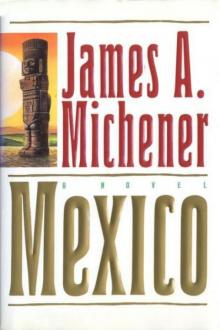 Mexico
Mexico The World Is My Home: A Memoir
The World Is My Home: A Memoir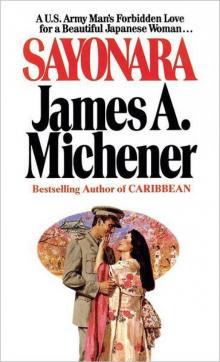 Sayonara
Sayonara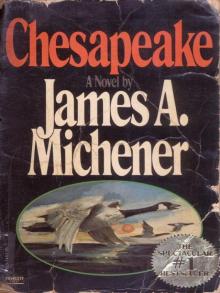 Chesapeake
Chesapeake The Novel
The Novel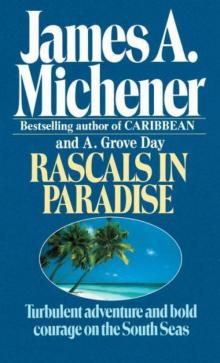 Rascals in Paradise
Rascals in Paradise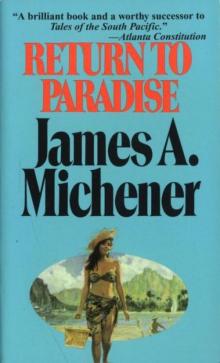 Return to Paradise
Return to Paradise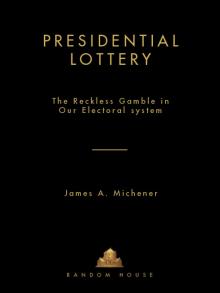 Presidential Lottery: The Reckless Gamble in Our Electoral System
Presidential Lottery: The Reckless Gamble in Our Electoral System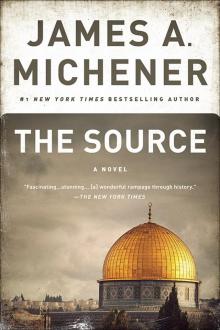 The Source
The Source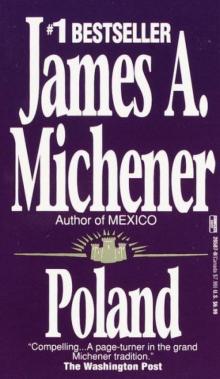 Poland
Poland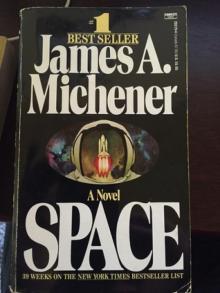 Space
Space Caravans
Caravans Creatures of the Kingdom: Stories of Animals and Nature
Creatures of the Kingdom: Stories of Animals and Nature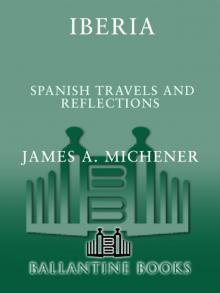 Iberia
Iberia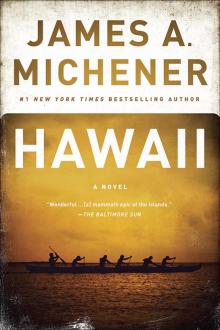 Hawaii
Hawaii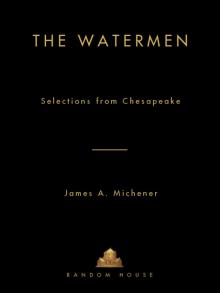 The Watermen: Selections From Chesapeake
The Watermen: Selections From Chesapeake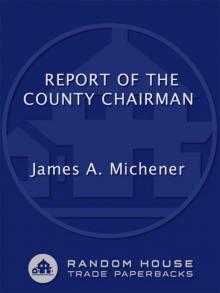 Report of the County Chairman
Report of the County Chairman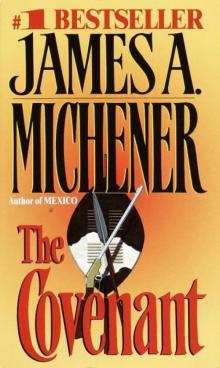 The Covenant
The Covenant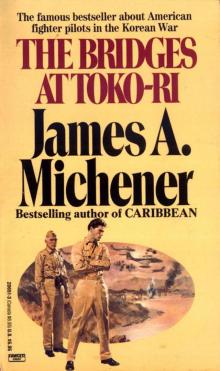 The Bridges at Toko-ri
The Bridges at Toko-ri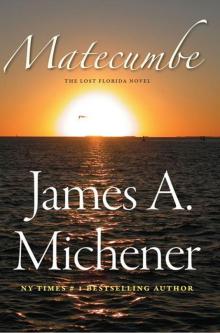 Matecumbe
Matecumbe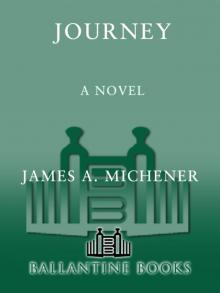 Journey: A Novel
Journey: A Novel Centennial
Centennial Sports in America
Sports in America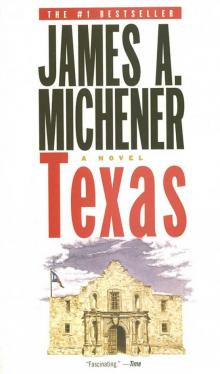 Texas
Texas Miracle in Seville
Miracle in Seville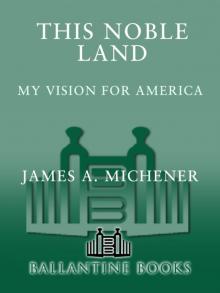 This Noble Land: My Vision for America
This Noble Land: My Vision for America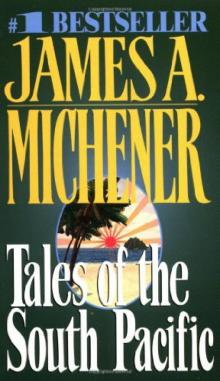 Tales of the South Pacific
Tales of the South Pacific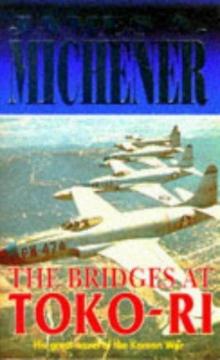 Bridges at Toko-Ri
Bridges at Toko-Ri Space: A Novel
Space: A Novel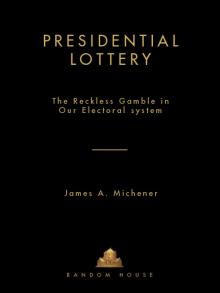 Presidential Lottery
Presidential Lottery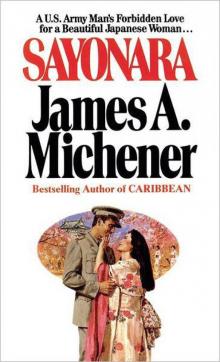 Sayonara: A Novel
Sayonara: A Novel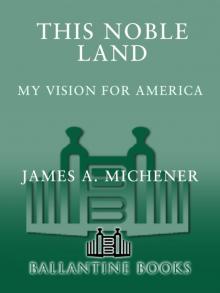 This Noble Land
This Noble Land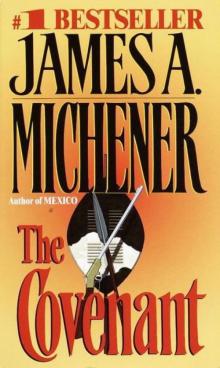 The Covenant: A Novel
The Covenant: A Novel Miracle in Seville: A Novel
Miracle in Seville: A Novel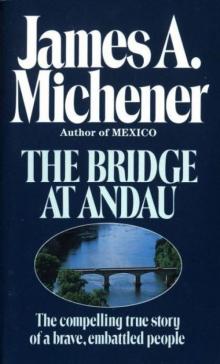 The Bridge at Andau
The Bridge at Andau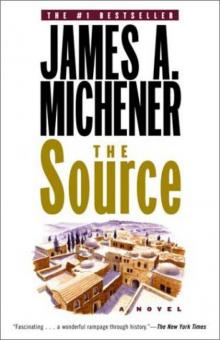 Source
Source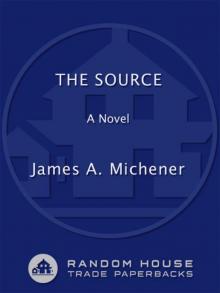 The Source: A Novel
The Source: A Novel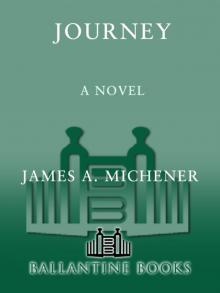 Journey
Journey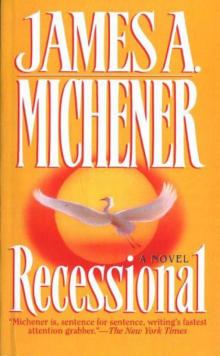 Recessional: A Novel
Recessional: A Novel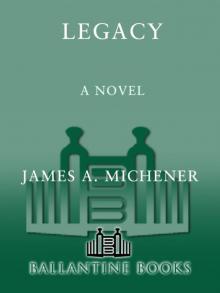 Legacy: A Novel
Legacy: A Novel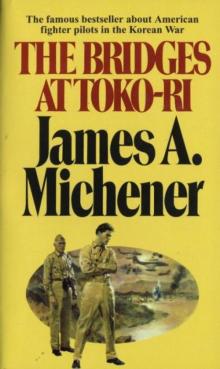 The Bridges at Toko-Ri: A Novel
The Bridges at Toko-Ri: A Novel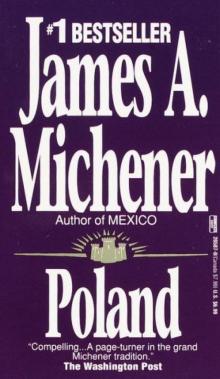 Poland: A Novel
Poland: A Novel